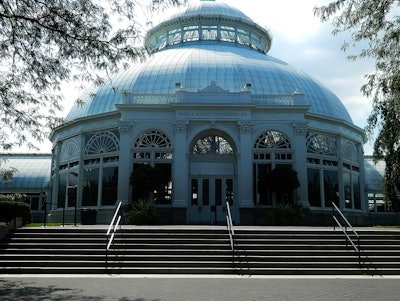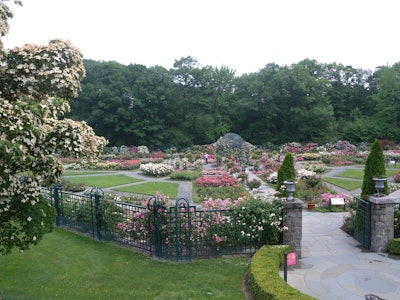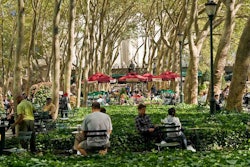 The Enid A. Haupt Conservatory has helped established the New York Botanical Garden as a leader in horticultural research.
The Enid A. Haupt Conservatory has helped established the New York Botanical Garden as a leader in horticultural research.Photo: Melody Ann Crespo/Flickr
New York City is known for its museums, but one that is different from the rest is the New York Botanical Garden (NYBG) in that it is a living museum.
Founded in 1891, the NYBG was created as the city strived to become recognized as a cosmopolitan world capital. Columbia University botanist Nathaniel Lord Britton and his wife Elizabeth, fellow botanist, were inspired by the Royal Botanic Gardens, Kew and launched a public campaign for New York City to establish a botanical garden of its own.
Located in the Bronx, the NYBG boasts of picturesque terrain, a freshwater river and 50 acres of old-growth forest. Calvert Vaux, co-designer of Central Park, laid out NYBG’s first schematic design and many of his features are still prominent today.
The botanical garden has had three main goals since its beginning: to conduct research on plants in order to protect and preserve them in the wild, to maintain and improve the gardens to the highest horticultural standard and to use the venue to educate the public about plant biology, horticulture and the natural world.
In pursuit of this mission, the NYBG has collected over 7,800,000 plant specimens in its research herbarium and built the world’s most important research library about plant science and horticulture.
 The Peggy Rockefeller Rose Garden is just one of the many gardens NYBG cares for.
The Peggy Rockefeller Rose Garden is just one of the many gardens NYBG cares for.Photo: Wikipedia
Across the 250 acres, the NYBG has 50 gardens and plant collections, and certain ones will look beautiful during select seasons. Some of the gardens include the azalea garden which is designed to be in bloom nearly year-round, the native plant garden which celebrates the beauty of plants native to northeastern North America and a fragrant herb garden.
The oldest plants to be found in the botanical garden include a Japanese winterberry in the Children’s Adventure Garden, a columnar tulip tree along Magnolia Way and a European beech near the oak collection, which were all planted in 1895.
The NYBG is also a world leader in plant research and conservation with its 200-member staff using the Plant Research Laboratory to study plants on the molecular level. It also educates the local community on fostering sustainable practices and the importance of ecosystems.
The botanical garden is always striving to be on the cutting edge of sustainable technology. It practices the principles of integrated pest management to avoid chemical solutions and has an entire fleet of natural gas and electric-powered vehicles.
During my trip, the NYBG will be displaying the art of Dale Chihuly, which is his first major garden exhibition in New York in more than 10 years. The exhibition will feature more than 20 installations of his garden-inspired glasswork. Certain installations were made specifically for NYBG to complement its landscape and architecture.
Over a million people visit the garden each year to view the diverse tropical, temperate and desert plant life. I have a feeling I’ll only be able to scrape the surface of what this place has to offer during my time in New York City.










